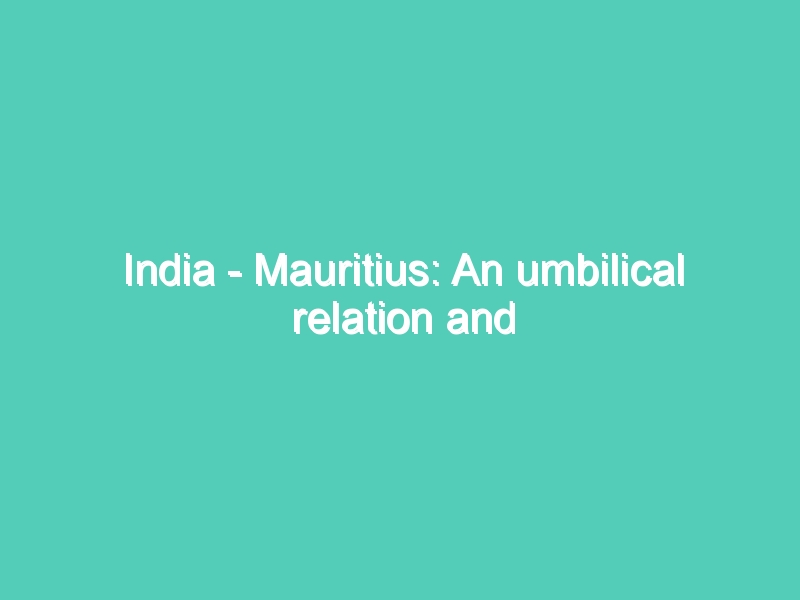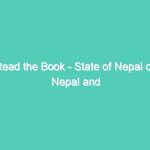Located about 900 km east of Madagascar, Mauritius is the ‘Little India’ of the southwest Indian Ocean. While the vast majority of ethnically heterogeneous nations have struggled to form successful democracies, Mauritius has not. Since independence in the late 1960’s, Mauritius is easily the most established and successful democracy in Africa. What has been the key to Mauritius’ success is defined by one word ‘Mauritianness’. The country’s varied ethnic and religious groups are united by a common sense of nationhood that precedes communal interests and emphasises tolerance and compromise.
Mauritius share an umbilical link with India. But what sets them apart is their achievement and status in terms of political power and state control, educational and socio-economic progress, maintenance of cultural and religious identity. The indentured labourers who migrated to Mauritius in the 19th century originated mostly, though not exclusively, from the Central Province of India. The Indo-Mauritius people constitute the majority of population which is approximately 70 percent. Out of this more than 30 percent are from Bihar and Uttar Pradesh, speaking Bhojpuri as their mother tongue. Bihari Mauritians are the descendants of Bihari migrants to Mauritius. A majority of Indo-Mauritians are Bihari, and most Mauritian prime ministers have been a Bihari. The Bihari Mauritians were mainly from the Gaya, Chhapra, Bhojpur and Gopalganj and East and West Champaran districts. In those early days of Migration, the labourers referred Mauritius as ‘Marich’. Celebration of historical and ethnic ties between Bihar, one of the least developed states of India, and Mauritius, considered an ‘economic miracle’ and a model of plural democracy, can enhance both the prestige of Bihar in India and that of the Bihari Diaspora in Mauritius.
The Island of Mauritius experienced successive waves of colonisers including the Portuguese, Dutch, French and finally, the British. Mauritius did not have a native population when it was first ‘discovered’. Its current population is primarily constituted of European settlers as well as African, Indian and Chinese immigrants. The French were the first permanent settlers on the Island following French colonisation in 1715. Under French rule, the Island thrived and sugarcane cultivation prospered. Slaves were brought from different parts of mainland Africa, including Mozambique and Madagascar. Later on, the British took over the Island in 1810 and following the abolition of slavery in 1835, Indian indentured labourers were brought from Bihar, Madhya Pradesh and other parts of India to work in the sugar cane plantations in place of the former slaves. The Indians brought a radical and permanent change in the ethnic composition of the population of the Island, making up its two-thirds population by 1871.
The Indo-Mauritians are divided along religious lines between Hindus and Muslims, and Hindus are further divided along class, linguistic and caste lines. Within a few decades of their arrival, the Indian labourers became, and still remain the largest population group on the Island. Chinese immigrants arrived since the early 1830’s and most of them got involved with trade and the retail sector. The different groups of migrants contributed to the diversity of the current population such that Mauritius has become one of the most ethnically heterogeneous nations. The population is presently composed of four ethnic groups and four major religious groups, namely, the Franco-Mauritians and Creoles who are Catholic; the Indian community, Muslim and Hindu; and the small Chinese community, either Buddhist or Catholic. In postcolonial Mauritius, political rule has been dominated by Hindus, although the political institutions in the country have ensured representation of the different ethnic groups. This fosters a feeling of justice and equity in terms of representation of diverse interests. Also, this has been a major factor which has enabled Mauritius to maintain peace and political stability despite the prevalence of ethnic fragmentation in Mauritian society. Diasporic identification and connections therefore remain strong in post-colonial Mauritius and the government has maintained good relations with the native countries or homelands of the ancestors of the Mauritian population.
In March 2015, during his official visit to Mauritius, the Indian Prime Minister, Narendra Modi referred to Mauritius as “Chhota Bharat” which means “Little India” and is a term rendered popular by former Prime Minister Indira Gandhi in the 1970’s during her visit to Mauritius. A history of the Indian Diaspora as indentured labourers in Mauritius materialised in the Aapravasi Ghat, which is the original immigration depot and has become a United Nations Educational, Scientific and Cultural Organisation (UNESCO) world heritage site. India has offered expertise and funding to help Mauritius move from its traditional economy of sugarcane and tourism.
The Island has also benefited from assistance from India in civilian structures, building infrastructure, health, science and technology, information technology, building and consolidating the capacities of Mauritius as a financial services hub and now a petroleum hub. India provides scholarships for Mauritians wishing to pursue higher studies in India and sponsors the promotion of Indian culture and languages through educational institutions such as the Mahatma Gandhi Institute, the Rajiv Gandhi Science Centre, Indira Gandhi Centre for Indian Culture, among others. Both India and Mauritius share several cultural, historical, linguistic and literary similarities. National Day of the Island, to which Prime Minister Narendra Modi was invited on March 12, was chosen in relation to the anniversary of the Salt March undertaken by Mahatma Gandhi in 1930, a key step towards the Independence of India. Mauritius celebrates its National Day on that day as a mark of respect to Mahatma Gandhi. In a statement issued at New Delhi, President Pranab Mukherjee said, “This day is not only significant in the history of the political struggle for freedom of both our countries but also symbolises how both India and Mauritius uphold the values of democracy.” Before returning to India, Prime Minister Narendra Modi stated, “My visit to Mauritius will aim to strengthen our age-old civilisational ties with ‘Chhota Bharat,’” referring to a term popularised by the former Prime Minister Indira Gandhi, who made the first state visit to the Island in 1970, and when more than a lakh people had gathered to welcome her at Port Louis (S. Haider, Hindu 2015). India and Mauritius certainly have a privileged relationship, but the Indo-Mauritians do not just promote the interests of their country of origin in Mauritius; their status in the Island is closely linked to the image of India in the international arena. In fact, Mauritius has also always been governed by leaders from Indian origin since its independence in 1968, with the exception of a short-term Berenger Prime Minister from 2003 to 2005.
Mauritius, a small and resource-poor Island nation, has benefited considerably from its ancestral Diaspora connections with France, India and China. The developmental, financial, technical and educational assistance from these ancestral nations has contributed to the development of the country. Yet, with the growing significance and size of the Mauritian Diaspora living and working overseas, and the looming economic challenges that Mauritius faces in the current global age, the potential that the Mauritian Diasporas possess for investment and development has been well recognised. Many Mauritians left the Island for better economic opportunities overseas, but they still maintain a strong sense of belonging to the homeland and regularly visit their families living on the Island. Mauritius has been an important trade partner of India for a long time. Relationships date back to British times and the countries have a shared heritage, legacy and populace. Since the major portion of Mauritian population is of Indian origin; their leadership has always been predominantly of an Indian origin. India has helped Mauritius economically, militarily and diplomatically, thus, Mauritius remains India’s major trading partner, investment route and friend with shared culture in the Indian Ocean.
Endnotes
• Allen, R. B. (1999). Slaves, Freedmen, and Indentured Laborers in Colonial Mauritius. Cambridge: Cambridge University Press.
• Bunwaree, S. (2000) ‘Elusive Multiculturalism in Post-Gatt Mauritius’ in S. Nirsimloo-Gayan (ed.) Towards the Making of a Multicultural Society. Moka: Mahatma Gandhi Institute.
• Cohen, R. (1997) Global Diasporas: An Introduction. London: UCL Press.
• Debass, T. and Ardovino, M. (2009) Diaspora Direct Investment (DDI): The Untapped Resource for Development. Washington DC: USAID.
• Eriksen, T.H. (1998) Common Denominators: Ethnicity, Nation-Building and Compromise in Mauritius. Oxford: Berg.
• Hollup, O. 1994. The Disintegration of Caste and Changing Concepts of Indian Ethnic Identity in Mauritius, Ethnology 33(4): 297-316.
• International Organisation for Migration (2014) Migration in Mauritius: A Country Profile 2013. Geneva: International Organisation for Migration.
• S.Haider,Hindu2015;https://www.thehindu.com/news/national/india-and-mauritius-announce-security-cooperation-pact/article6983499.ece


